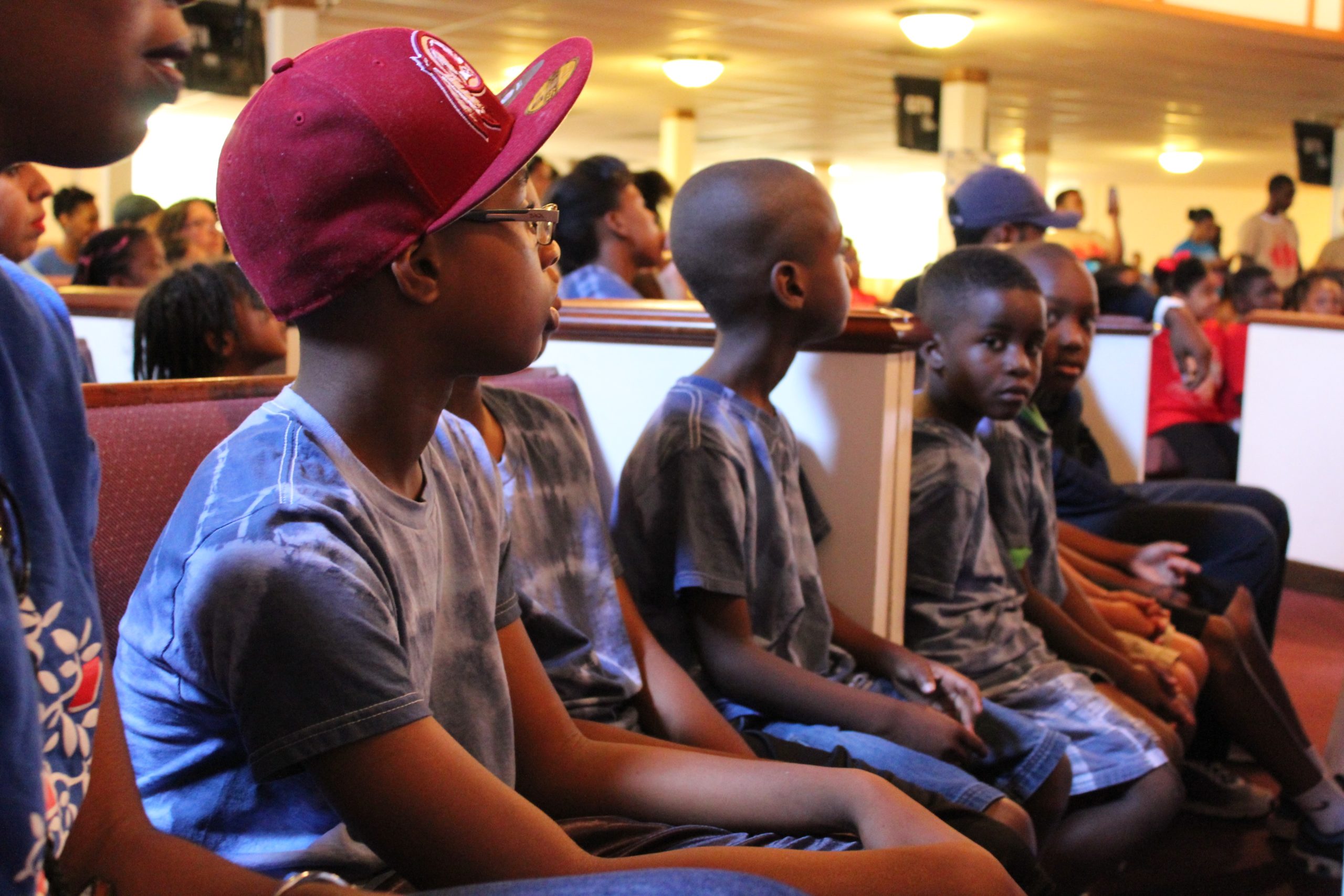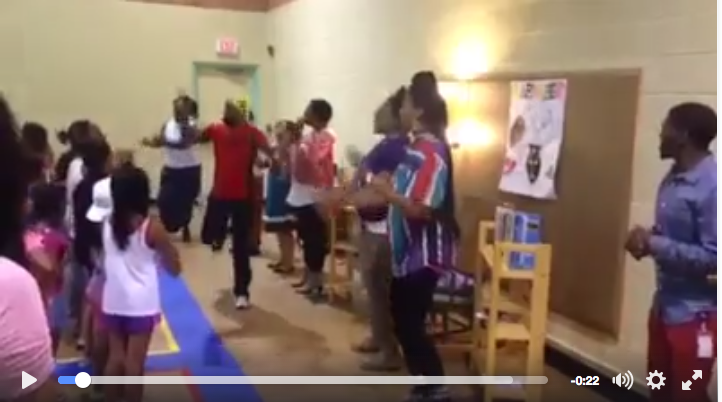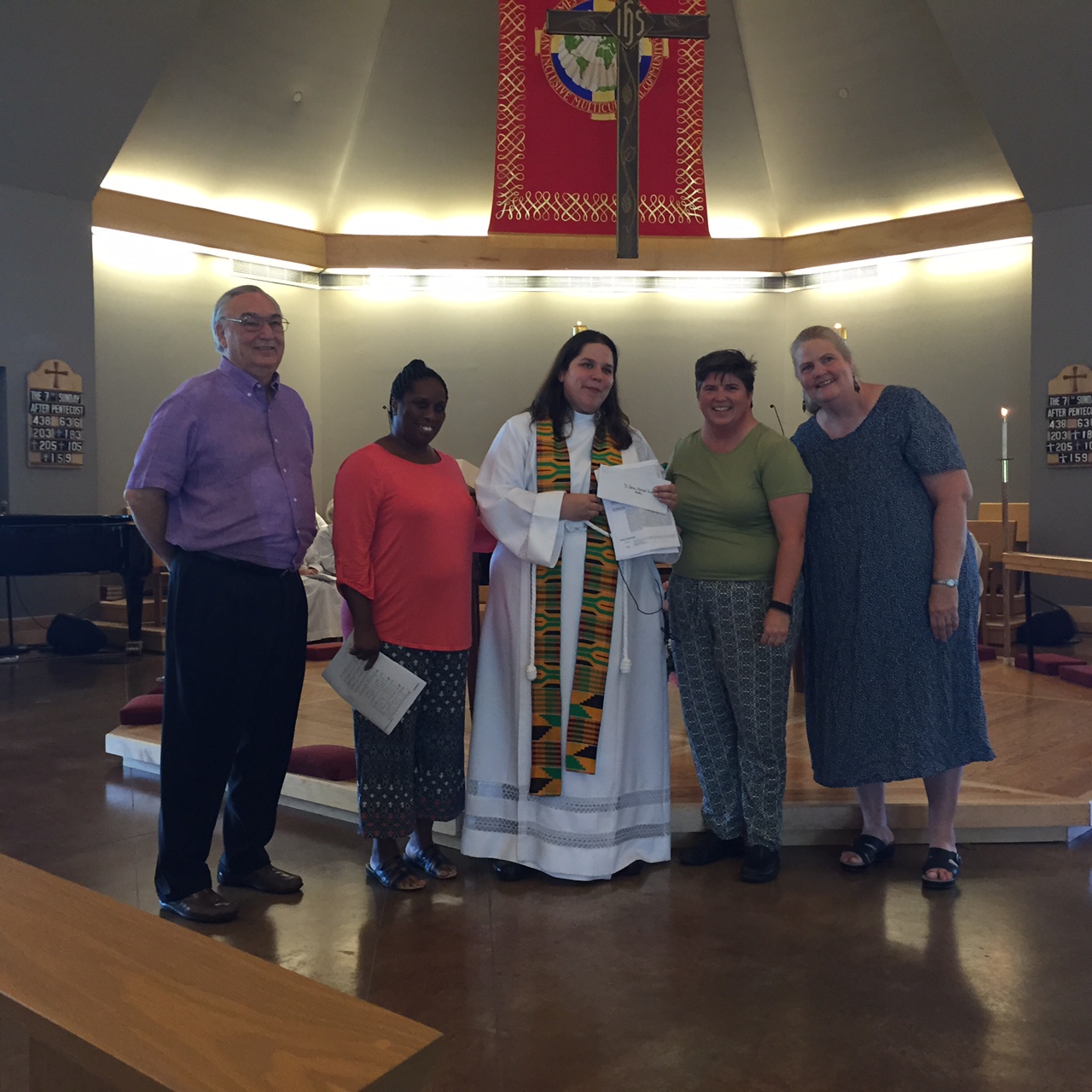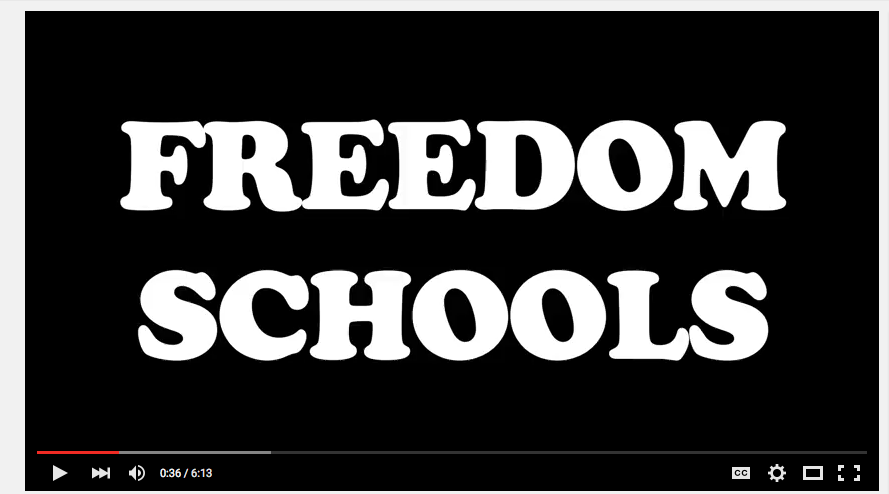
St. James’ Episcopal Church in East Austin organized a Freedom School program to improve the lives of low-income children in their community. This Congregation Case Study shows how the congregation was able to bring the program to their community and why EHF supports this kind of engagement that promotes community health.
What is a Freedom School?
“I know I can be what I want to be; if I work hard at it, I’ll be where I want to be,” is one of the many chants and cheers you will hear coming from Harambee, the daily affirming celebration and preparation for the day, at Freedom School hosted by St. James’ this past summer.
 Watch video of Harambee in action at St. James’
Watch video of Harambee in action at St. James’
The Freedom Schools program was developed by the Children’s Defense Fund and is focused on improving the lives of children through health, literacy, and policy issues over a six-week period during the summer. Students are provided with two meals daily, books to start their own libraries at home, and exposure to new and exciting experiences — all for free.
St. James’ is “an inclusive, multicultural church” situated in East Austin and has served their community for over 70 years. The church is centered in one of the lowest income areas of Austin.
How the Freedom School began at St. James
Children’s Defense Fund hosts an annual national conference called the Proctor Institute that trains and equips leaders to handle issues surrounding child poverty –including the Freedom Schools program. Each year, thousands of clergy, educators and other faith-based leaders gather together at Haley Farms in Tennessee for the conference.
Ten years ago, Fred and Kathy Miller were two of the thousands who attended. They have been members of St. James’ for several years and heard about the program through friends.
“Our friends kept saying, ‘you have to go with us, we just had the most amazing experience of our lives,'” Kathy said.
Eventually the Millers went. They learned all about Freedom Schools and couldn’t wait to share the idea with their congregation.
“We started thinking about how we could do this at our church and through St. James,’” Kathy said.
The Millers were excited to introduce the idea in Austin and bring it to life. Since Austin is a city that’s one of the fastest growing in America and swarming with bright and creative individuals, they thought getting the idea off the ground shouldn’t be hard. Turns out, it was a lesson in patience.
“It took three to four years,” Kathy said. “It was harder than what we anticipated, but it was greater than what we expected.”
Getting Started
The East side area of Austin is home to some of the city’s lowest-income and impoverished neighborhoods. The congregation recognized the need for a program like a Freedom School and began the work of bringing it to life.
“There’s a great need in Austin,” said Mila Jackson, who serves as the Site Coordinator of Austin’s Freedom School. “There is just a lack of programs serving children. Other cities have so many programs they are competing for children, but that’s not the case in Austin.”
In a church started by community members, educators and civic leaders, Freedom School was a natural fit for the St. James’ congregation. Members saw it as a great way to serve their neighbors by helping students combat learning loss that often takes place during the summer.
Educator Jennifer Graf became a part of Austin’s Freedom School team (and eventually project director) after hearing about the program and its impact on students and overall community health. As a public school teacher, she understood the importance of not only working with the students, but also engaging the parents in creating a place that builds relationships and trust.
These relationships began forming a connected community around East Austin. By developing the Freedom School project, St. James’ members helped build social networks and partnerships that benefit the overall health of the community.
“I think cooperation is a big part of community health,” said Fred Miller. “The whole idea of Harambee is everyone working together. And when you’re talking about community health, it’s not just about being healthy, it’s mental health and working together and solving problems together.”
Facing Challenges
Although Freedom Schools is nationally recognized and serves thousands of children across the nation each summer, there was still work to be done by the church in order to make the program a success in Austin.
“Funding was the biggest hurdle,” said Gina Houston, Executive Director of Freedom Schools.
Each time a Freedom School is started, the host site is required to cover the cost ranging from $50,000 to $80,000 each year. The money is used to cover the cost of field trips, books, food and salaries for the intern leaders who serve as instructors of the program. As it would be for many churches, raising this amount of money was quite an undertaking. However, church members saw it as obstacle rather than a roadblock.
St James’ was able to secure money through its own 501(c)3 organization called The Welcome Table. Organizers applied for other grants and worked with the University of Texas Department of Diversity and Community Engagement. The congregation also began working with other churches in the area including St. Alban’s Episcopal Church, First Baptist Church of Austin and a host of others. By collaborating with other churches, St. James’ was able to utilize the resources all the churches brought to the table, along with the resources already at St. James’.
Strength in Relationships
The congregation says it would not have been able to make the program work without the support of key stakeholders, including previous Rector, Rev. Lisa Saunders.
“The fact that she was so on board is really significant,” said Jennifer Graf. “Any church that wants to replicate this process, the priest needs to be on board with it. That was a great influence to have Lisa behind us.”
Finding a location for the program was also a challenge, but civic leaders in the congregation were able to connect with other schools through numerous conversations and relationship building to find a location. They were able to host the first summer of Freedom School in Austin at Oak Springs Elementary, located less than three miles away from the church.

Community Impact
Despite the time and challenges it took to get it started, the program has proved to be a success not only for Freedom Schools, but for St. James’ and the surrounding community.
In its first year, 84% of students (called Young Scholars) maintained or increased their grade level in instructional reading and did not experience summer reading loss. Many of those same students also had increased levels of average daily school attendance. Improved attendance contributes to the overall health and stability of the entire community.
The program is now in its second year and is providing training and leadership skills that congregation members, staff and community leaders can use to develop the capacity to grow similar programs in the future. In addition, through direct service to local schools and families, St James’ is deepening its relationship with the community and provides avenues for future community partnerships.
“Freedom Schools is a transformational summer experience,” said Gina Houston. “It shapes your heart.”
“It makes us feel good that we are doing something out in the community, and we are not here just for St. James’,” Mila Jackson said.
Looking Ahead
St. James’ hopes to continue the Freedom School project each summer and eventually expand it to more campuses and sites throughout Austin.
The program has served more than 50 students and has made a positive impact in the surrounding neighborhood. Not only are students not losing vital information during the summer, they’re also building lasting relationships and tools that carry over into the school year.
As a church that started out and continues to be a place where all are welcome, Freedom School continues that mission.
“It’s about people who want to solve problems as opposed to just discussing them,” said Fred Miller. “That’s what the people of St. James’ did.”
 Watch a video about Freedom School-Austin
Watch a video about Freedom School-Austin
Partnering with EHF
One of the ways EHF supports congregational efforts to improve community health is by offering limited financial support to help congregations create or expand programs that strengthen their relationships in the community, particularly in ways that affect community health.
St. James’ was one of the first congregations to apply for and receive EHF support, which was for the congregation’s efforts to develop and operate the Freedom School program. Support from EHF helped pay for staff and congregation training that was focused on community engagement.
EHF participated in this congregational engagement program because it further strengthens the church’s integration into the community and also strengthens educational achievement — a key determinant of life-long health. The curriculum builds child self-esteem, supports community social cohesion, and promotes social justice. Those are key elements to promoting community health.
While EHF does not fund education programs in its grant-making, when congregations aim outreach activities to partner with schools to serve neighborhood youth, it can have a meaningful and lasting impact on community health. That’s why EHF supports efforts such as Freedom Schools to address root causes of health issues through our congregational engagement programs.